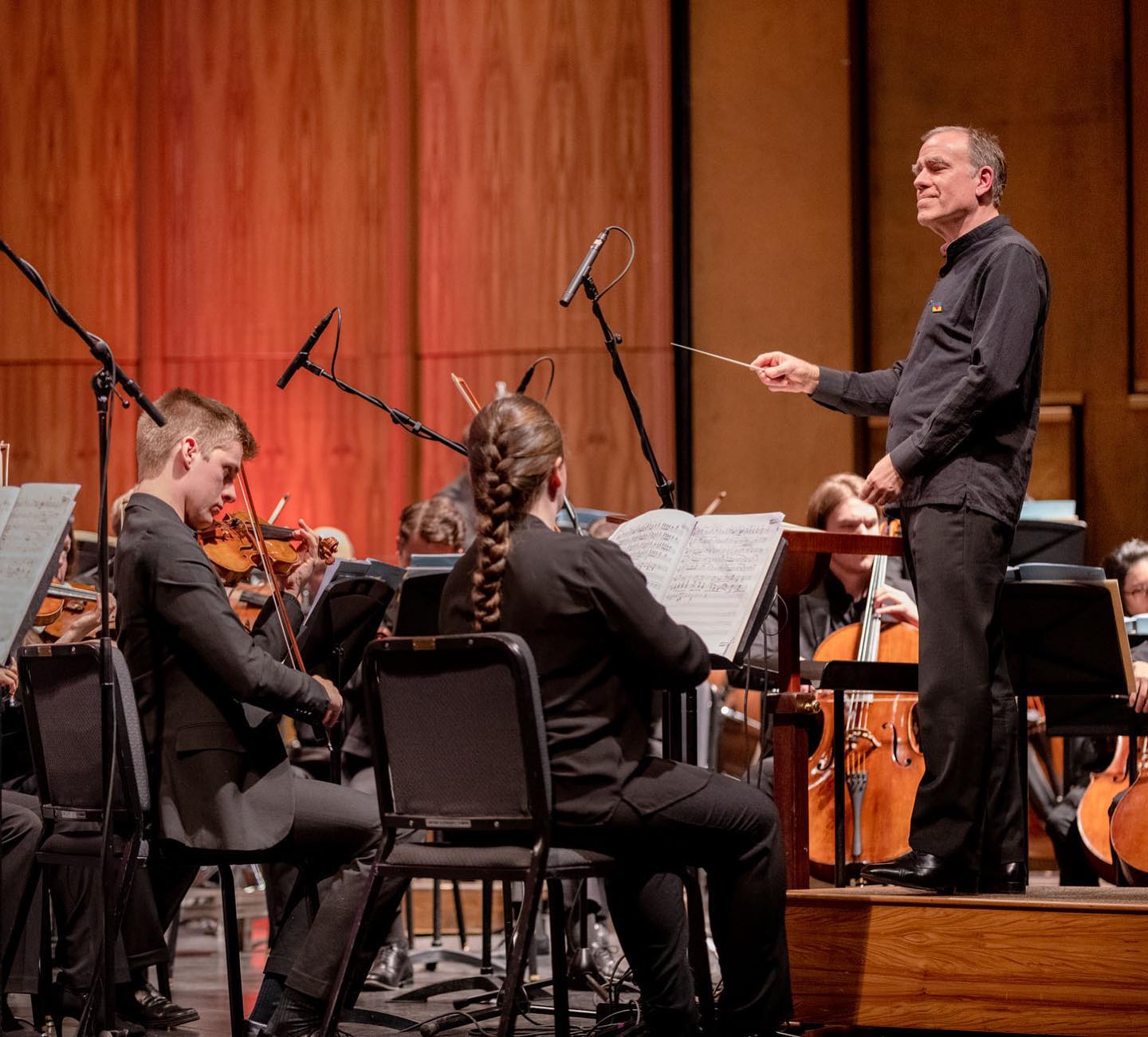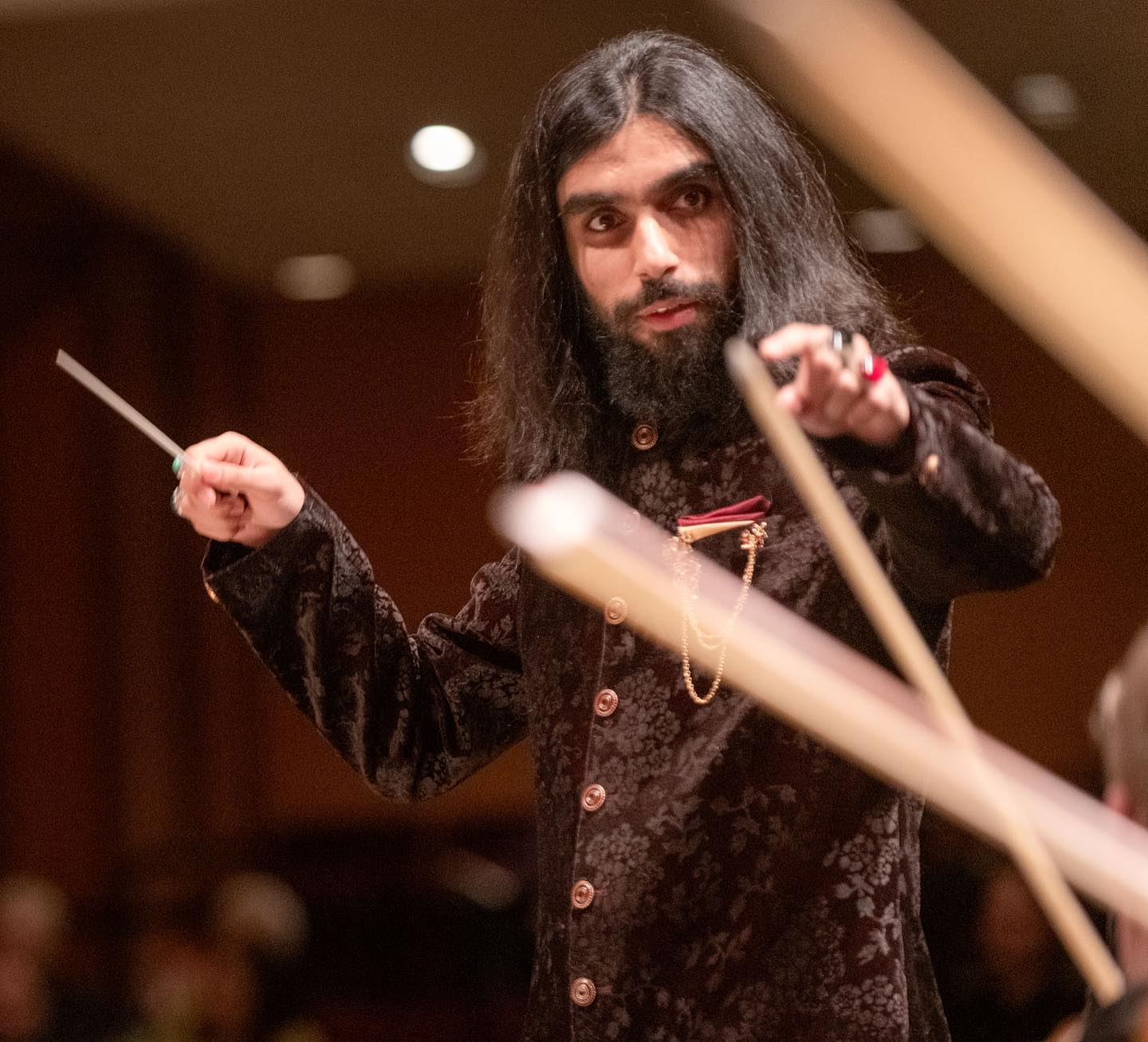by Stephanie Manning

With their latest program, “Global Circus,” the Symphony wanted to change that. On February 25, listeners heard works by composers from Iran, Afghanistan, Syria, France, and Argentina in a multimedia program that was both memorable and emotionally moving.
The stage of E.J. Thomas Hall looked a little different than usual, with a screen lowered behind the orchestra and a few lighted pillars to fill up the extra space on stage. That extra space was a result of a smaller ensemble, with the string section including just three cellos and two basses. This chamber orchestra configuration proved very successful. In the light and tasteful opening, Mozart’s Turkish March, the strings displayed an impressive level of coordination, not only amongst themselves but also in quick unison sections with the piccolo.
The strings further proved themselves as chamber music collaborators in Kareem Roustom’s Dabke — a work named for a Middle Eastern folk dance — which layers long lines with fast moving passages. Concertmaster Tallie Brunfelt and principal cello Eri Snowden-Rodriguez were perfectly synchronized during their delicate unison duet. Later works in the program would continue to feature principal players in prominent roles. Georges Bizet’s L’Arlesienne spotlighted principal flute Barbara O’Brien and the impeccably-tuned piccolo playing of Jenny Robinson, while principal clarinet Amer Hasan deserves special mention for his finger-flying solo in Alberto Ginastera’s Variaciones concertantes.
The most memorable pieces came from the two composers who were in attendance. The first was Milad Yousufi (pictured right), a young Afghan composer who credits Christopher Wilkins as an impactful mentor — the two met at a conducting workshop at the Afghanistan National Institute of Music in 2014. In a touching gesture, Wilkins handed Yousufi the baton so he could lead the orchestra in his own work: Freedom. Written in response to the global refugee crisis and Yousufi’s own experiences seeking asylum in the U.S., Freedom combines grand symphonic textures with a repeating Afghan influenced-melody. The brief composition was also accompanied by projections of bold, colorful artwork.
That projector screen would again come into play for the evening’s standout work — one which inspired the program’s title. First recorded in 2021, House of Circus is the soundtrack to a short film that depicts the talented young people of Türkiye’s Sirkhane Social Circus School, which teaches circus arts and music to thousands of children — many of them refugees from the Syrian civil war.
Without any spoken words during the 14-minute runtime, Iranian composer Sahba Aminikia crafted a score that seamlessly blends into each student’s expression of their art form. There’s Fatima, whose trapeze routine is treated with a slow, driving jazz groove; Mahmut, whose ear-to-ear grin while on stilts is matched by the orchestra’s upbeat energy; and Refik, whose short and sharp dance moves were in sync with the percussiveness of the drumset.
The six young people featured in the film have been deeply affected by the horrors of war. And yet while they are dancing, juggling, spinning, and hanging gracefully from a trapeze, their smiles begin to break through. By telling their story via movement, they can finally feel free.
Published on ClevelandClassical.com March 1, 2022.
Click here for a printable copy of this article




